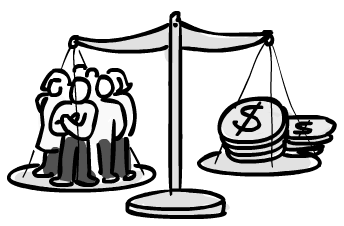Mitigated speech is a linguistic term describing deferential or indirect speech inherent in communication between individuals of perceived High Power Distance. The term was recently popularized by Malcolm Gladwell in his book, Outliers, where he defines mitigated speech as "any attempt to downplay or sugarcoat the meaning of what is being said". He described 6 degrees of mitigation with which we make suggestions to authority:
1. Command – “Implement this”
2. Team Obligation Statement – “We need to try this”
3. Team Suggestion – “Why don’t we try this?”
4. Query – “Do you think this would help us in this situation?”
5. Preference – “Perhaps we should take a look at this an an alternative”
6. Hint – “I wonder if we will run into any issues by following our current process”
As I observe the command and communication structure between a PMO and its members and contractors, I have the opportunity to witness mitigated speech every day. Being direct (command) doesn't always work. People need to learn to be flexible in their requests and negotiations if they have the hope those in power will implement new strategies. Additionally, learn to read those around you to know what degree of mitigation you will use IF you intend to use it.
As I read Outliers, I started to think of the relationship between mitigated speech and Appendix G.8 (negotiation) of the PMBoK.
Negotiation is a strategy of conferring with parties of shared or opposed interests with a view of compromise or reach an agreement. Negotiation is an integral part of project management and when done well, increases the probability of project success.
The following skills and behaviors are useful in negotiating successfully:
Analyze the situation.
Differentiate between wants and needs - both yours and theirs.
Focus on interests and issues rather that on positions.
Ask high and offer low, but be realistic.
When you make a concession, act as if you are yielding something of value, don't just give in.
Always make sure both parties feel as if they have won. This is a win-win negotiation. Never let the other party leave feeling as if he or she has been taken advantage of.
Do a good job of listening and articulating.
To summarize, stride to be a win-win negotiator and be aware of the mitigated speech you are using to conduct your negotiations.
 I was in a contract negotiations meeting for several hours yesterday. The most notable quote came after the customer was asking for the basis of estimates for the scope of work being proposed.
I think both the vendor and customer could have done a lot better if they had just valued customer collaboration over contract negotiation.
I was in a contract negotiations meeting for several hours yesterday. The most notable quote came after the customer was asking for the basis of estimates for the scope of work being proposed.
I think both the vendor and customer could have done a lot better if they had just valued customer collaboration over contract negotiation.

